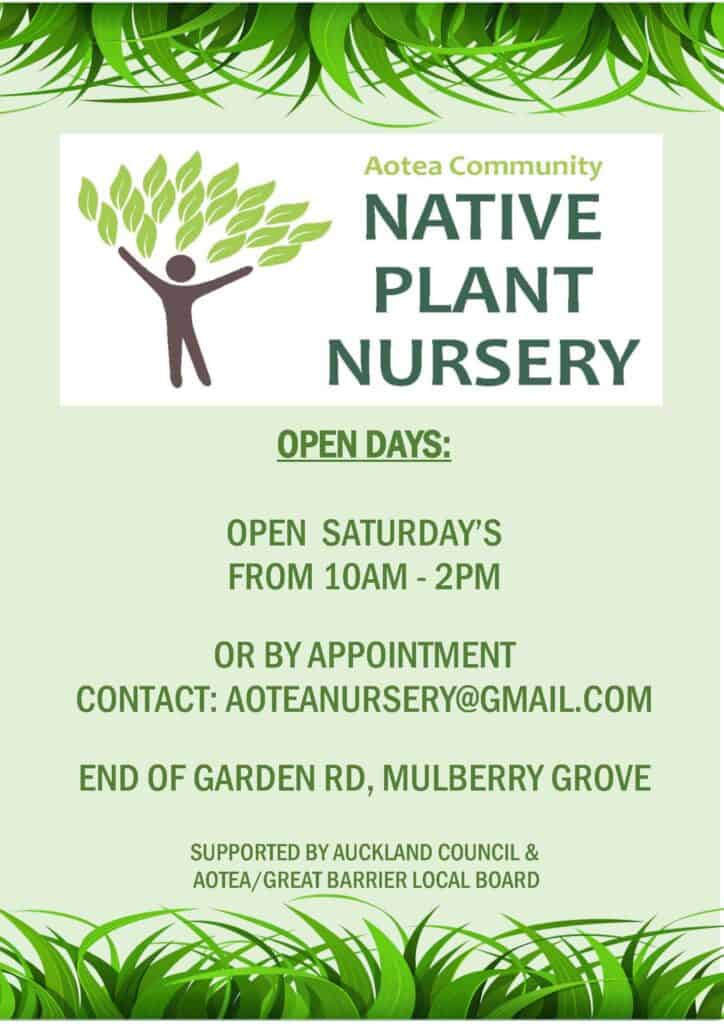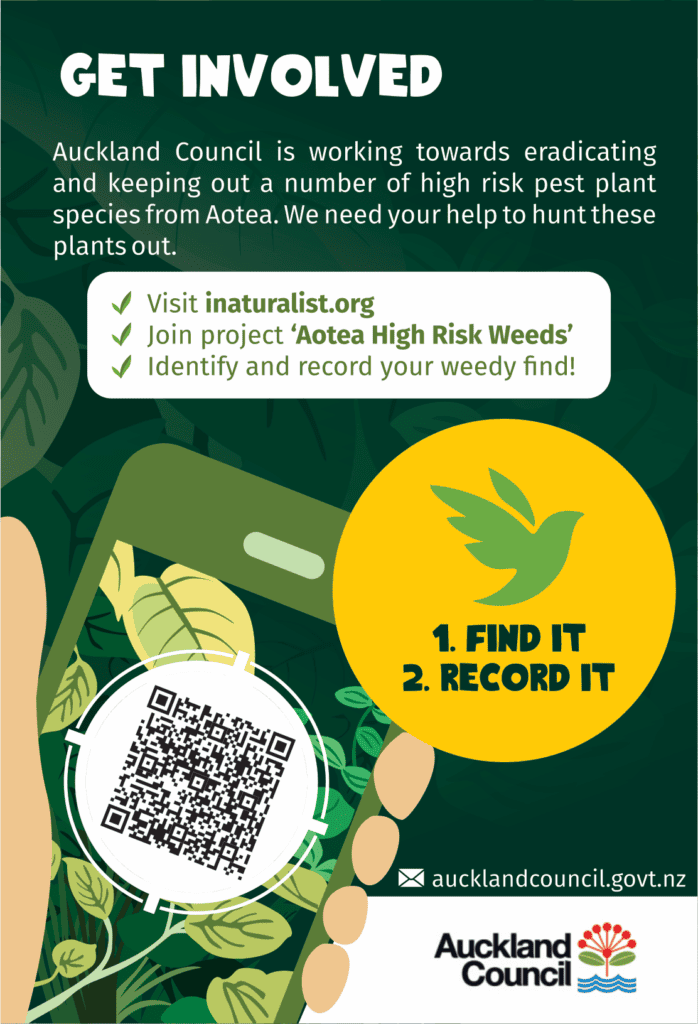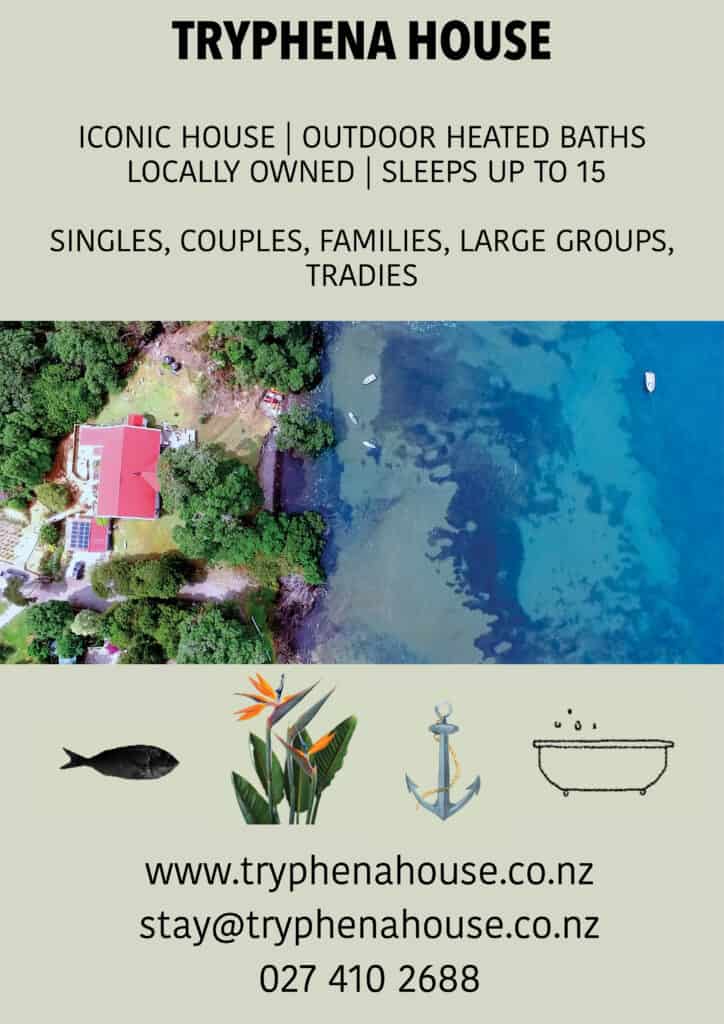The Okiwi Community Ecology Project has been carrying out its annual Asian Paddle Crab monitoring in the Whangapoua estuary since November. The students of Okiwi School are experts at this conservation mahi and this season has seen two juvenile pest crabs caught in January’s trapping efforts and we have one final round to carry out in March.
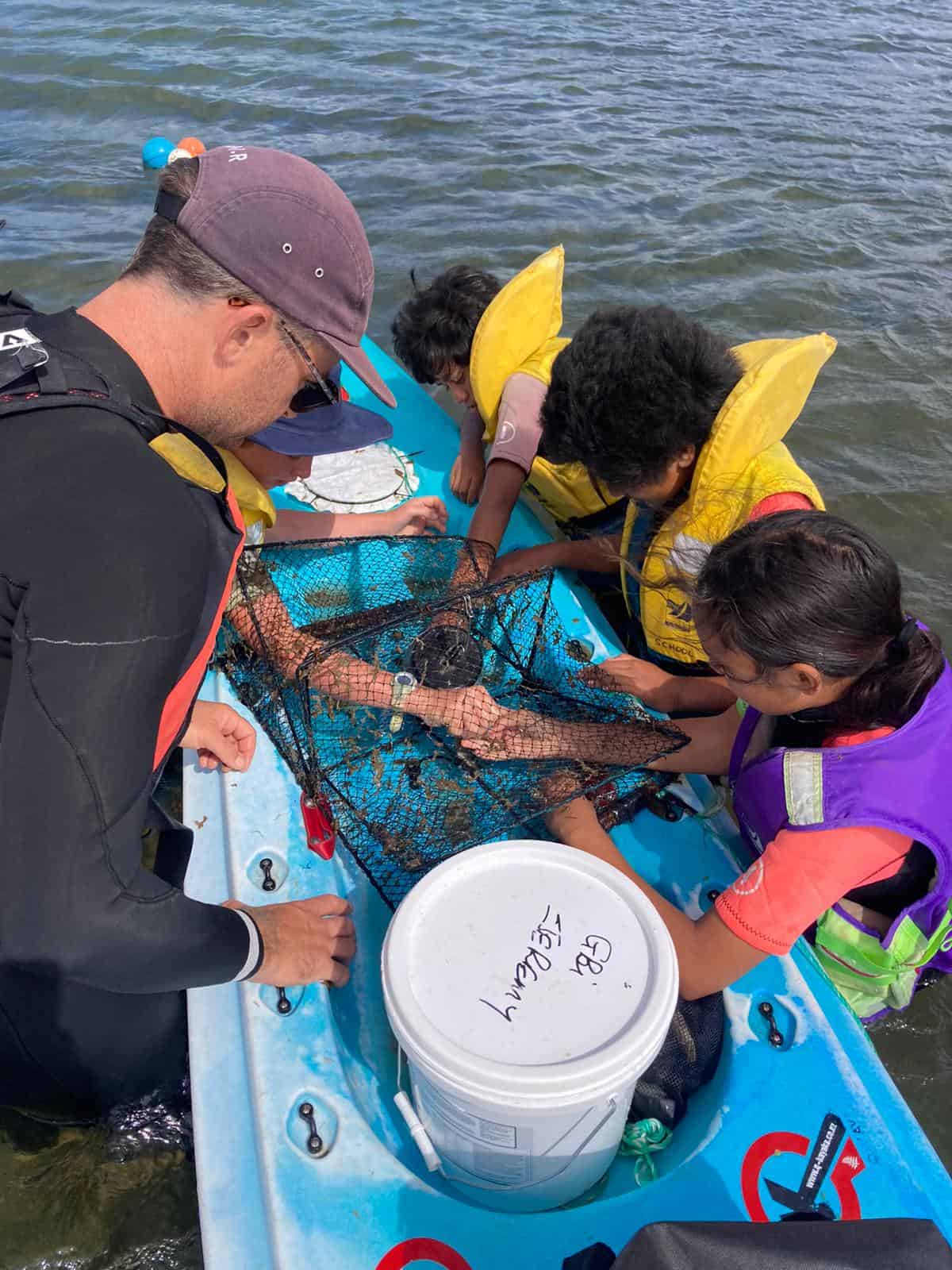
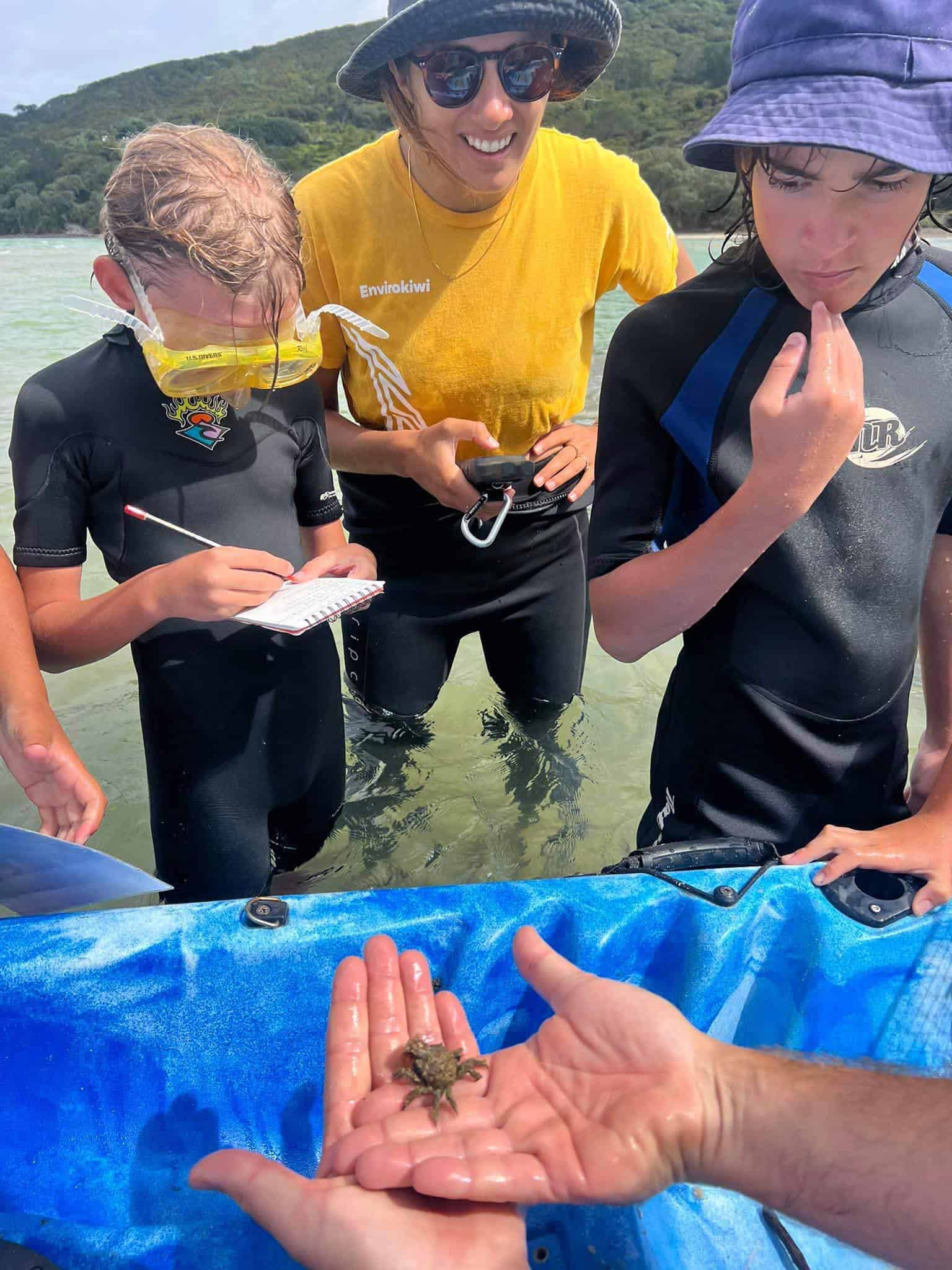
We have also branched out this season, following a suspected Asian Paddle Crab sighting in Tryphena. With assistance from Mulberry Grove School students, a week of surveying was carried out at Gooseberry Flat Beach from 19 February to 23 February. Pots were also placed within the Oruawharo Estuary and Kaitoke North Estuary this week. Permits for this important work were obtained from MPI and Fisheries. While this serves as a biosecurity exercise, we really see the value in getting out there with our Tamariki and helping them to learn about the importance of preserving their local marine environment.
General description and habitat:
A relatively large swimming crab with paddle-like hind legs. The shell can reach 12 cm across. Adults have six distinct spines or spikes on each side of the shell below the eyes, and five prominent spines on the upper surface of each claw. The crab ranges in colour from pale-green or olive green to a deep chestnut brown with purplish markings on the shell.
It is typically found in estuaries where there is firm sand, muddy fine sand, or muddy-shelly fine sand.
Why are Asian Paddle Crabs bad?
The crab is very aggressive, displacing native crabs (pāpaka) and preying on a variety of native and aquaculture species including shellfish, fish, other crustaceans and polychaete worms. It is also a carrier of diseases that may greatly impact other crustaceans. Read more here.
What to do if you spot an Asian Paddle Crab:
If possible and you’re comfortable, please try and capture the crab in a container with some saltwater. They can be a little pinchy, so please handle with care. Contact Thomas Daly immediately to coordinate a pick-up.
If you are 100% certain it is an Asian Paddle Crab, you can dispatch of it humanely. Please keep the specimen and coordinate with Thomas Daly for retrieval.
Failing that, please capture a clear photo of the crab and keep track of time, date and exact location of spotting. Contact Thomas Daly with all information.
Thomas Daly Contact: Thomas@envirokiwi.co.nz | 022 303 4562
You can also upload a photo of your suspected Asian Paddle Crab to iNaturalist for confirmation.
Here is a video explaining how to identify the Asian Paddle Crab from Bay of Plenty Regional Council
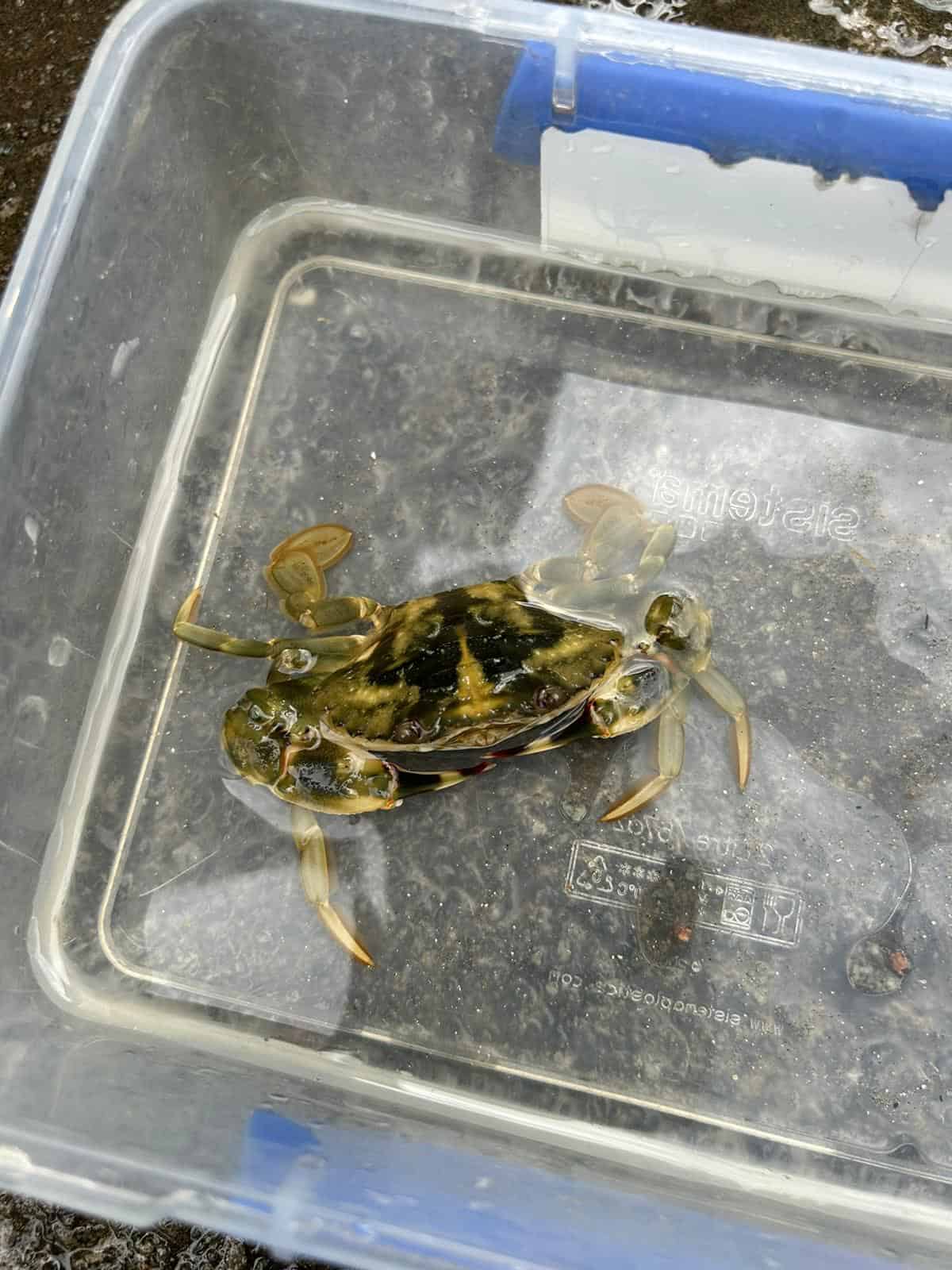
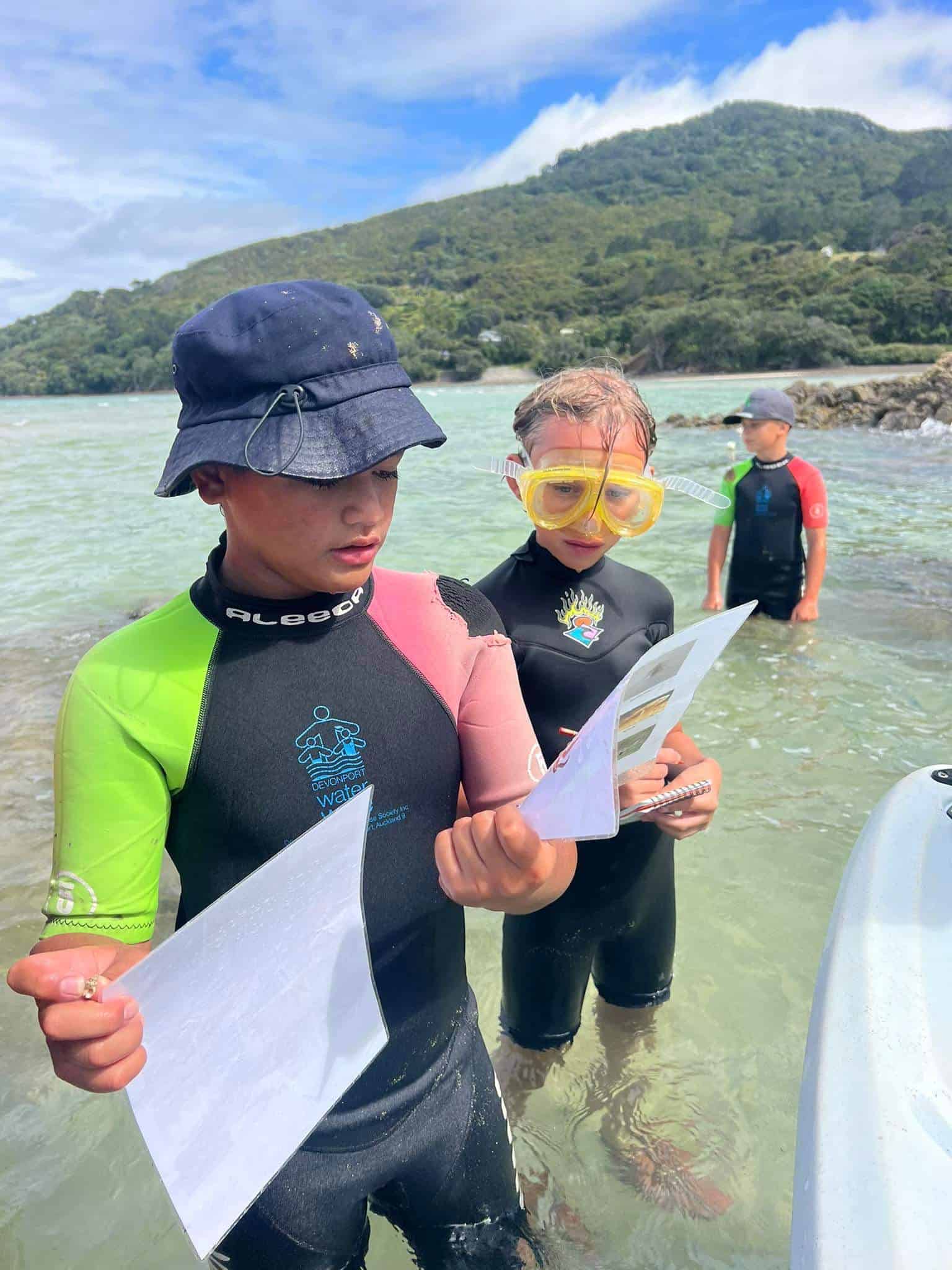
This story and monitoring results are developing. Stay tuned and we will continue to update you on our progress.
Words by Thomas Daly for Okiwi Community Ecology Project




